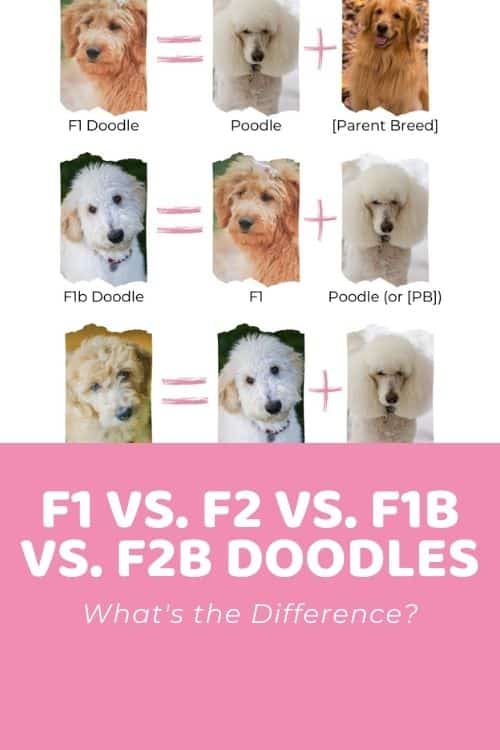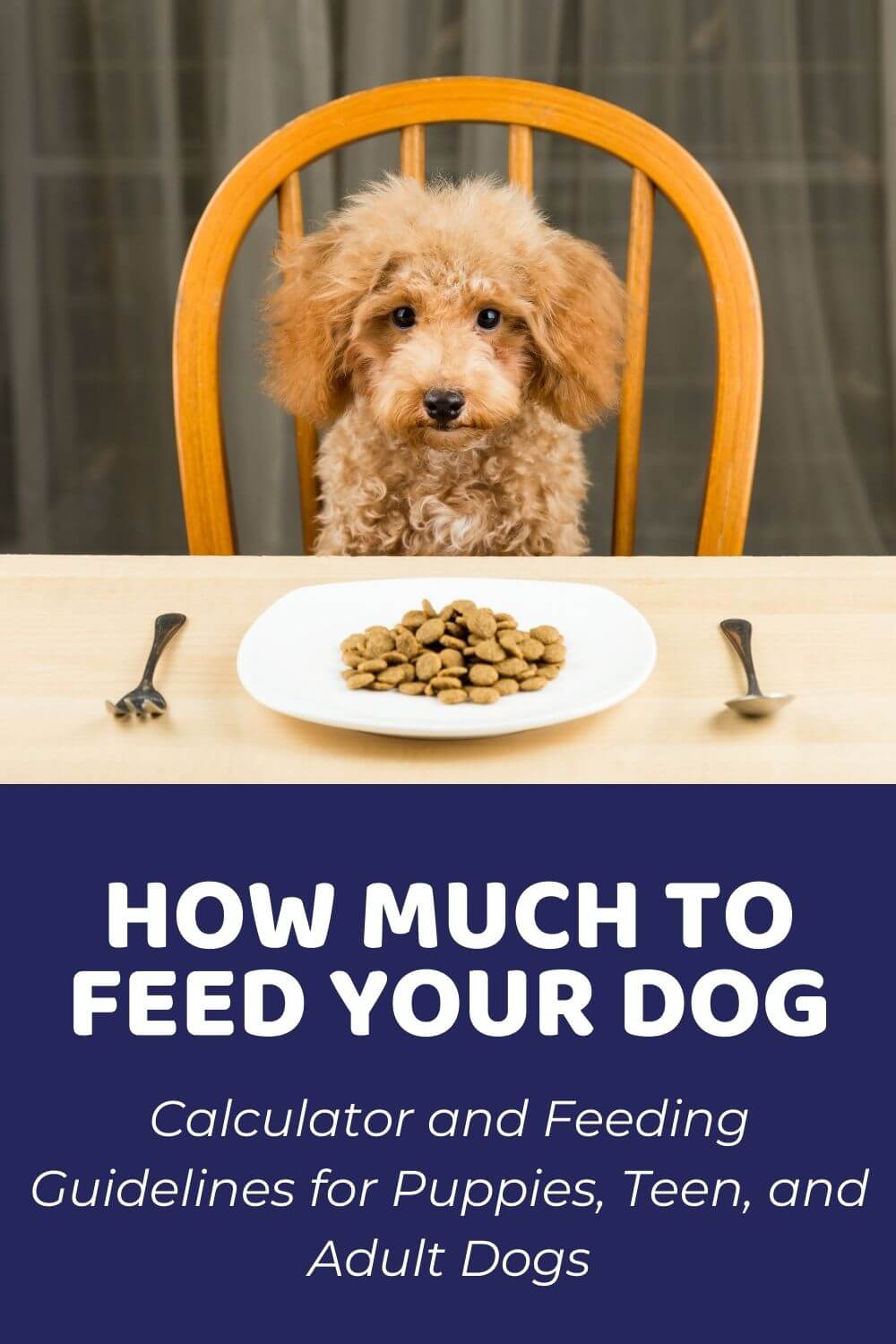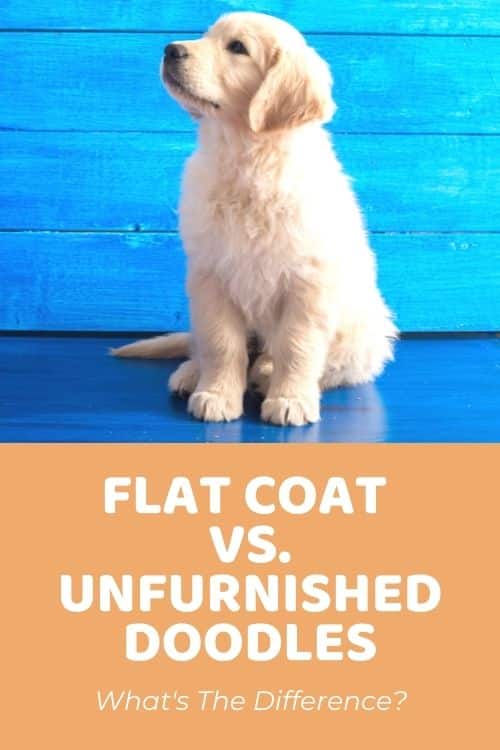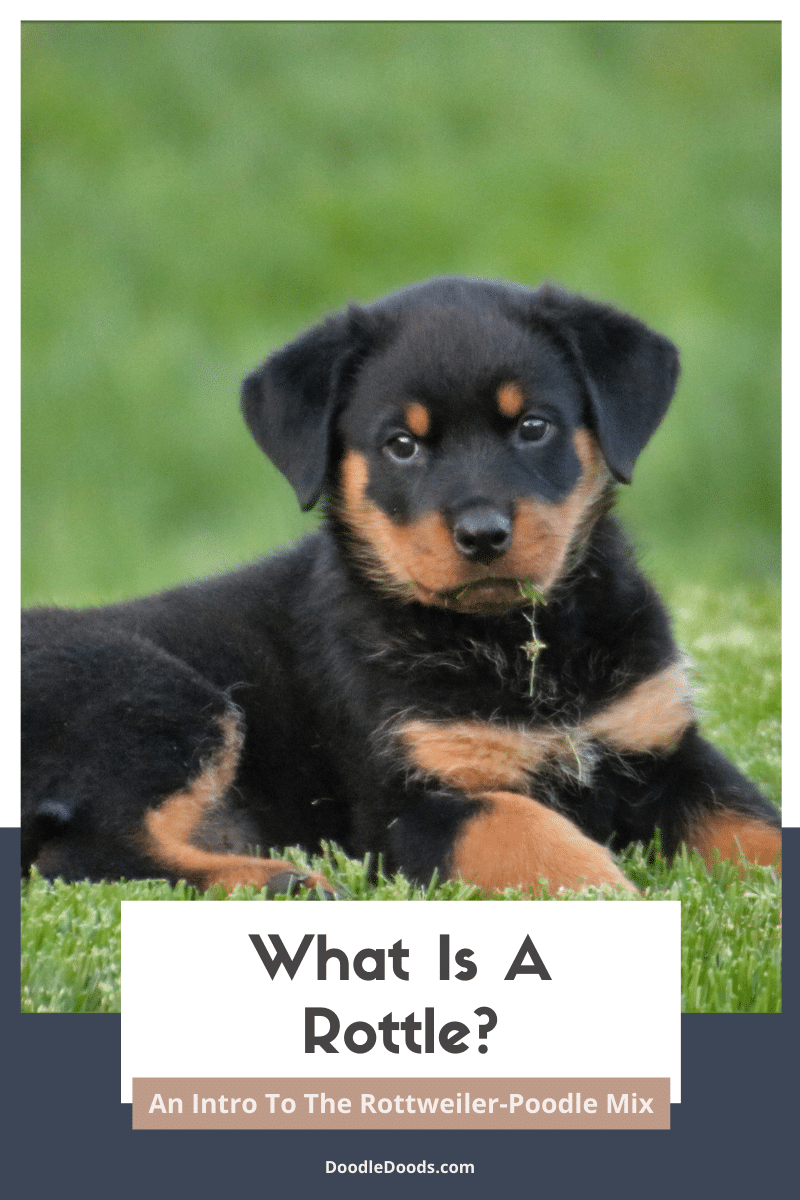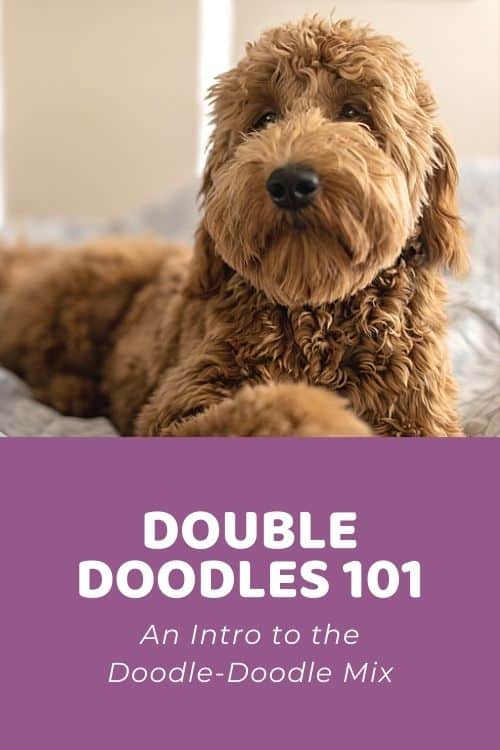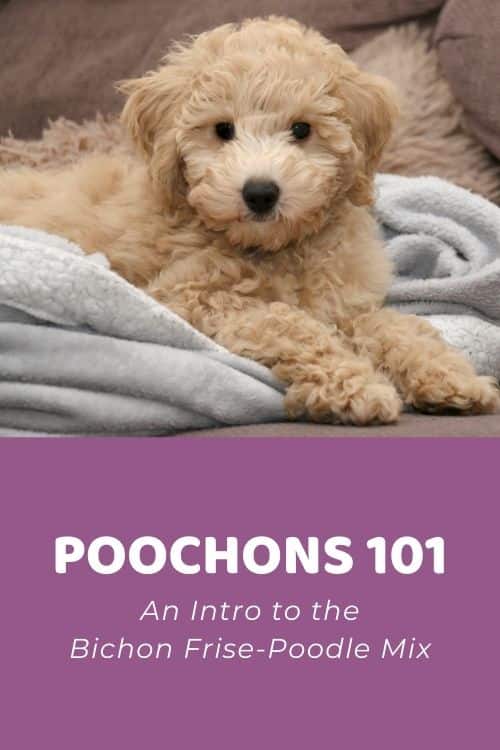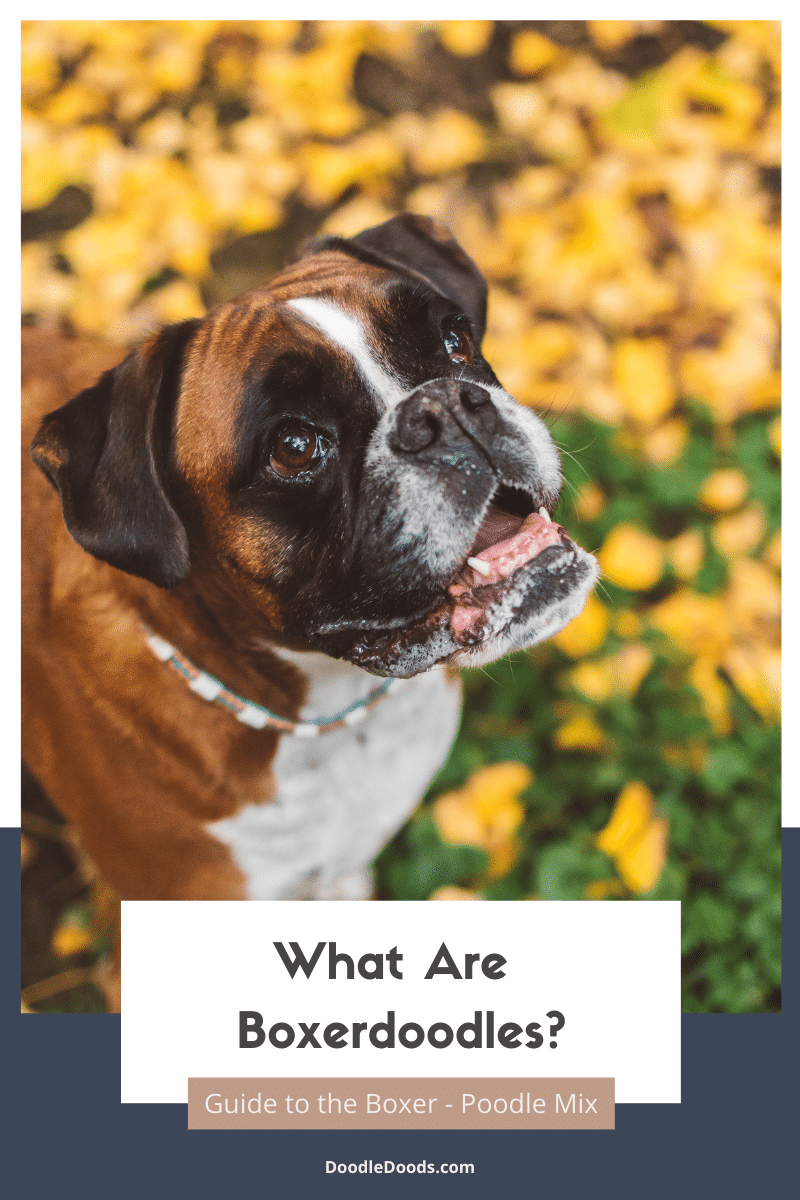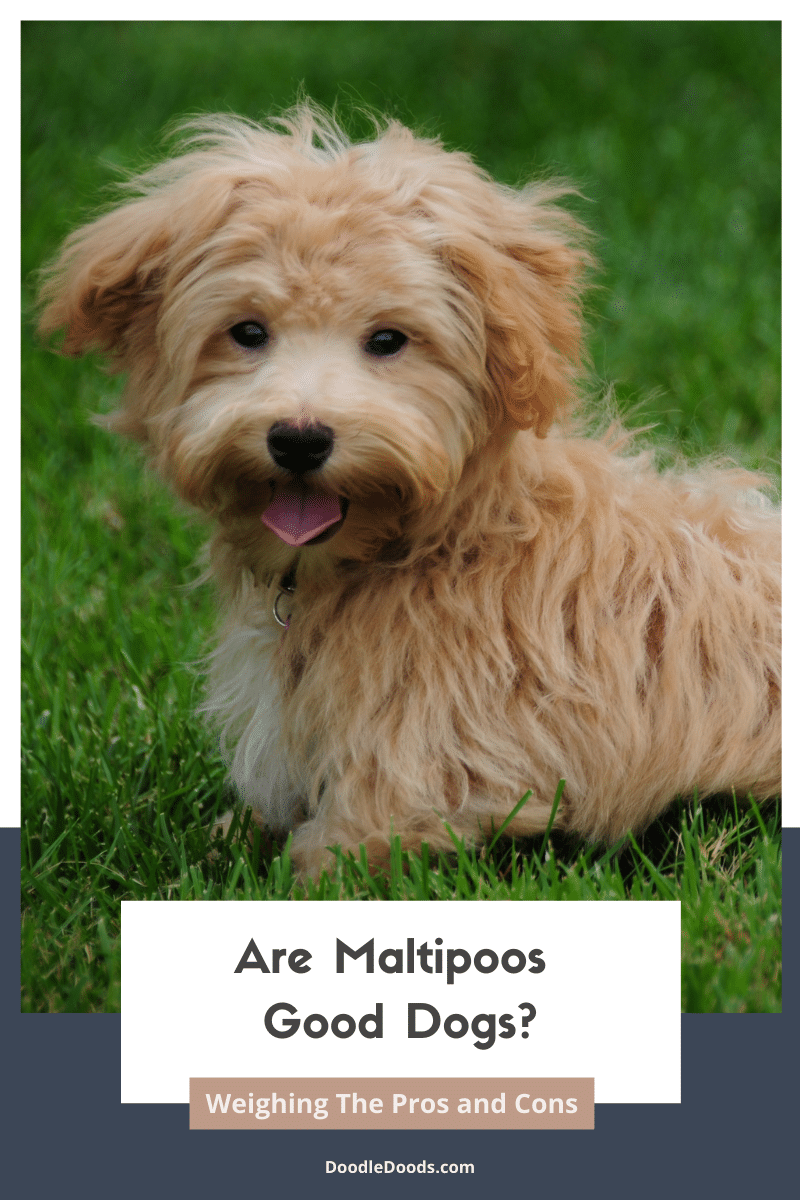You’ve probably heard about Multigenerational Goldendoodles. But you might be wondering – what are Multigen Goldendoodles anyway? In this guide, we’ll talk about everything related to Multigenerational Goldendoodles, including their temperament, size, grooming needs, activity levels, and much more. By the end of this guide, we’ll also help you decide whether or not a Multigenerational Goldendoodle would be the right fit for you. Let’s get into it!
Table of Contents
- Multigenerational Goldendoodles Explained
- Should You Prefer Multigen Goldendoodles Over Normal Goldendoodles?
- Multigenerational Goldendoodles: Information & Facts
- Are Multigenerational Goldendoodles Good Family Dogs
- Are Multigen Goldendoodles Healthy?
- How Can You Choose The Right Goldendoodle Generation?
- Multigenerational Goldendoodles 101: Frequently Asked Questions
Multigenerational Goldendoodles Explained
The Goldendoodle is a hybrid cross between the Golden Retriever and Poodle. But, as you may know, there’s more to it. Goldendoodles can be either first-generation, second-generation, or even multigeneration. Then we also have backcross generations, making things even more complicated.
So, before we continue this discussion, it’s important that we first understand how Goldendoodle generations work.
Goldendoodle Generations
| 1st Parent | 2nd Parent | % Golden Retriever* | % Poodle* | |
| F1 Goldendoodle (first-generation) | Golden Retriever | Poodle | 50% | 50% |
| F1B Goldendoodle (first-generation backcross) | F1 Goldendoodle | Poodle | 25% | 75% |
| F1BB Goldendoodle (first-generation backcross backcross) | F1B Goldendoodle | Poodle | 12.5% | 87.5% |
| F2 Goldendoodle (second-generation) | F1 Goldendoodle | F1 Goldendoodle | 50% | 50% |
| F2B Goldendoodle (second-generation backcross) | F1 Goldendoodle | F1B Goldendoodle | 37.5% | 62.5% |
| F2B Goldendoodle (alternate cross) | F2 Goldendoodle | Poodle | 25% | 75% |
| F3 / Multigen Goldendoodle | F1B Goldendoodle or higher | F1B Goldendoodle or higher | Varies | Varies |
As we can see, there are plenty of different Goldendoodle varieties. By combining two different breeds, the process isn’t as straightforward compared to purebred dogs. But generations can help us a great deal in understanding the genetic side of things.
Essentially, Goldendoodle generations explain how a puppy was bred and how much of their genetics are inherited from either of their lineage. On the other hand, these are just rough estimates and don’t necessarily guarantee that the puppies will have a certain percentage of Golden Retriever and Poodle in the mix. Rather, it’s a helpful guideline that helps us predict the outcome to a certain degree.
This also means that breeders can use various types of Goldendoodles to achieve a certain outcome. For instance, if a breeder’s goal is to breed very low shed and hypoallergenic Goldendoodles, they should look into backcross generations like F1b, F1bb, or F2b, and F2bb. So, thanks to Goldendoodle generations, breeders can achieve more control over the puppies’ size, coat type, shedding levels, and other traits.
What Is A Multigenerational Goldendoodle?
So, what is a Multigen Goldendoodle? A Multigenerational Goldendoodle would be a Goldendoodle that’s third generation or later. But, different breeders do interpret it differently. For instance, some breeders consider F2b Goldendoodles as Multigenerational Goldendoodles.
By the way, F2b Goldendoodles can also be achieved through various routes. For instance, some breeders opt to create F2b Goldendoodles from an F2 Goldendoodle and a Poodle, whereas others create F2b Goldendoodles from an F1b and F1 Goldendoodle parents.
According to the Goldendoodle Association of North America, however, Multigen Goldendoodles have two Goldendoodle parents. One of them has to be an F1b Goldendoodle or multigen. In addition to that, a Poodle or a Golden Retriever bred to a Multigen Goldendoodle also constitutes a Multigenerational Goldendoodle. By that definition, F2b and F2bb Goldendoodles can also be considered as Multigenerational Goldendoodles.
As you can see, there are various ways how breeders can create Multigenerational Goldendoodles. They could use either two F2 Goldendoodles, cross F1b Goldendoodles back to F1 Goldendoodles, or come up with a completely different combination instead. The possibilities are almost endless!
Should You Prefer Multigen Goldendoodles Over Normal Goldendoodles?
If you’re planning to adopt a Goldendoodle, you’re probably thinking whether you should opt for ‘regular’ or Multigenerational Goldendoodles. At the end of the day, it ultimately depends on your preference and needs.
You may also have to take into account that not all breeders specialize in all of the different generations. In fact, breeders usually specialize in one or two Goldendoodle generations. So, if you’re set on getting a certain type of Goldendoodle, you may have to either travel to another state or have your puppy delivered to you for an additional cost.
But going back to the topic, all Goldendoodle generations have their pros and cons that you should consider beforehand. One of the key perks of Multigenerational Goldendoodles is that they’re often more predictable in terms of appearance, size, hypoallergenic levels, potential for shedding, personality, and more.
That’s because breeders who specialize in Multigen Goldendoodles usually have spent a lot of time, energy, and resources to refine their breeding programs. They’ve conducted all of the necessary health and DNA tests, and already know what to expect in terms of the coat types, shedding levels, and temperament.
In comparison, F1 Goldendoodles with a 50-50 mix of both purebred parental breeds may lean on either side of the lineage. This comes with an added uncertainty, making it much more difficult to predict the outcome. For this reason, F1 Goldendoodles aren’t usually recommended for people with severe dog allergies, as many of the pups may still inherit a shedding undercoat.
Multigenerational Goldendoodles: Information & Facts
If you’re really serious about getting a Goldendoodle, you’ll obviously need all the facts. Let’s now take a closer look at the most common traits of Multigen Goldendoodles.
Temperament & Personality
The great thing about Multigenerational Goldendoodles is that they often have the perfect balance of Golden Retriever’s loving and friendly nature combined with the unmatched intelligence of the Poodle.
Goldendoodles can be best described as friendly, affectionate, outgoing, and extremely smart. They get along well with children, provided that you’ve properly socialized your Dood with people of all ages from early on. In addition to that, they tend to make friends everywhere they go, making them excellent pets for almost anyone.
Coat Types
Multigenerational Goldendoodles can inherit one of the three coat types seen in Goldendoodles – straight, wavy, and curly.
Curly coats are often considered the best choice amongst the three, as these pups are usually very low to non-shedding, making them an excellent choice for people with allergies. Although they barely shed, they are also the most prone to matting.

On the other end of the spectrum we have straight coats that take most after the Golden Retriever parent. But even though straight-coated Goldendoodles generally come with a shedding undercoat, they tend to shed much less compared to their purebred Retriever parent.
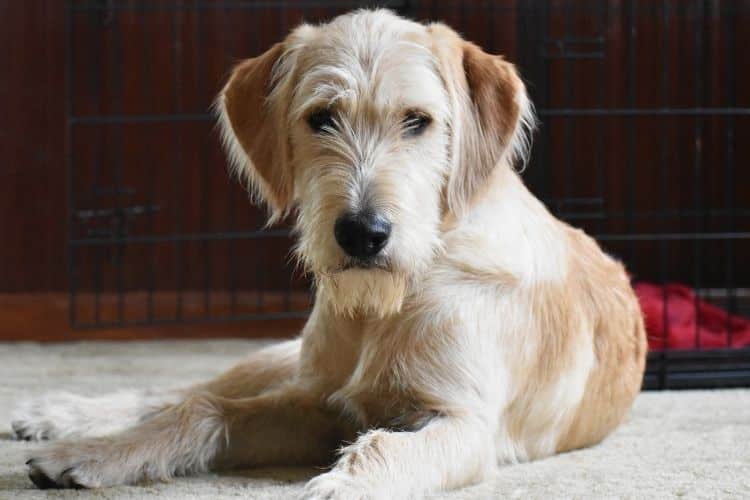
And finally, Multigen Goldendoodles can also inherit a wavy coat that sits somewhere between the straight and curly. Wavy-coated Goldendoodles are usually the easiest to manage, as they aren’t as prone to tangles as curly coats, but they may have an undercoat.
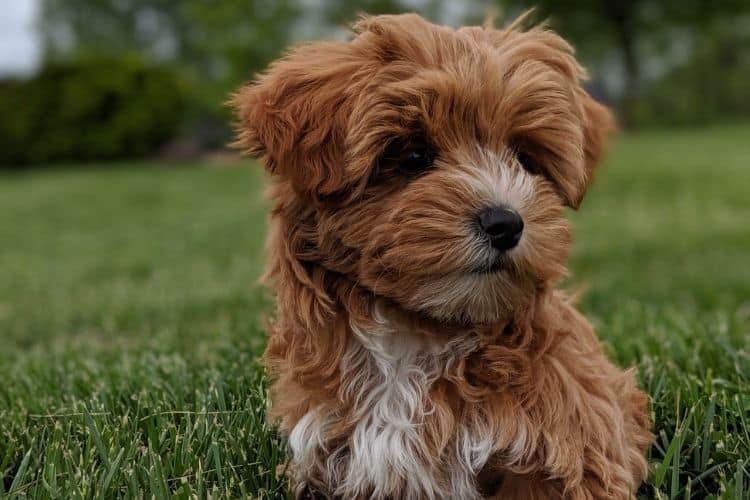
Size
There are three, even four size categories for Multigenerational Goldendoodles. Like other generations, Multigen Goldendoodles come in either standard, mini/medium, and toy sizes. Standard Goldendoodles are the largest of them all, whereas Toy Goldendoodles are the smallest of the bunch.
Here’s a Goldendoodle size chart showing the size estimates for each Dood:
| Toy Goldendoodle | Mini/Medium Goldendoodle | Standard Goldendoodle | |
| Weight | 10-25 pounds | 25-50 pounds | 50-90 pounds |
| Height* | 15 inches or less | 15-20 inches | 20-26 inches |
| Age at Full-Grown | 7.5-11 months | 11-13 months | 12.5-16 months |
*A dog’s height is measured from their withers, which is the highest part of their shoulder blades.
Lifespan & Health
The average lifespan of Goldendoodles is 10 to 15 years, which is a fairly wide estimate. In general, smaller Toy and Mini Goldendoodles tend to outlive their larger Standard and Medium Goldendoodle counterparts. For this reason, the average life expectancy of smaller Goldendoodles would range between 12 to 15 years, whereas larger Doods have a slightly shorter life expectancy of around 10 to 13 years.
However, when looking at Multigenerational Goldendoodles, it’s important to understand that their genetics can also play a role here. Interestingly, Poodles have a longer lifespan compared to Golden Retrievers, about 12 to 15 years compared to the Goldie’s 10 to 12 years. So, if a Multigenerational Goldendoodle’s genetics take more after the Poodle, they’ll likely also have a longer lifespan.
All in all, Multigenerational Goldendoodles tend to be healthy dogs with quite a long life expectancy. Of course, like any other crossbreed, Multigen Goldendoodles have to be bred ethically to ensure that their parents are healthy and free from genetic conditions. We’ll discuss this topic more in-depth a bit later on in the article.
Nutritional Needs
In terms of their diet, both Multigen Goldendoodles and ‘regular’ Goldendoodles have the exact same nutritional needs. On the other hand, all Goldendoodles have different dietary requirements in their different life stages, such as in puppyhood, adulthood, and in senior years. Additionally, your Dood’s size will also play a role here, as smaller Toy and Mini Goldendoodles need less food than larger Standard and Medium Goldendoodles.
For Goldendoodles, we’ve created a full guide on the best dog and puppy food formulas that are nutritionally balanced and contain high-quality ingredients. In addition to that, we recommend you also check out our article How Much Should I Feed My Dog? Calculator and Feeding Guidelines for more information.
Grooming Needs
Ah, the dreaded topic of grooming a Multigen Goldendoodle! We’re not going to lie, Goldendoodles are high-maintenance dogs when it comes to their coat care. Especially if you’ve got a curly-coated Dood, which many Multigenerational Goldendoodles are.
The main steps in a Multigen Goldendoodle’s grooming routine include:
- Daily brushing with a good quality brush (See also: Line Brushing: Prevent Your Doodle From Being Shaved (Video Tutorial) & The 2 Absolute BEST Brushes for Goldendoodles)
- Weekly nail trims (See also: How to Trim Dog Nails Ultimate Guide: Special Considerations for Doodles)
- Hair and ear hair trimming every 4-8 weeks (See also: Goldendoodle Grooming at Home: Video Tutorial Step-by-Step Guide! & How to Groom a Doodle At Home: Online Course)
- Bathing when necessary (See also: Best Shampoo for Goldendoodles: Groomer and Owner Recommended & How to Bathe a Doodle: Step-by-Step Ultimate Guide + Things You’ll Need)
- Regular ear cleaning (See also: Dog Ear Infection Symptoms, Treatments, and Prevention for Doodles)
- Oral hygiene (See also: How To Brush Your Dog’s Teeth At Home)
Energy Levels
Goldendoodles are active dogs and the Multigen Goldendoodle is no different. These pups enjoy all sorts of activities, both indoors and outdoors. Walks, jogs, playtime, you name it, they love it. For a Multigen Goldendoodle, you should aim to get at least 60 minutes of exercise each day.
Furthermore, due to their high energy levels and curious nature, you should also keep in mind that Goldendoodles require mental stimulation just as much as they need physical stimulation. Providing the perfect balance of the two helps your pup express all that pent up energy, while also minimizing the risk of destructive behaviors.
Training
Although Multigenerational Goldendoodles are highly intelligent and easily trainable, that doesn’t mean that you’ll have a well-behaved and fully trained puppy from the moment you bring them home. But, it does make the whole process of training and early socialization that much easier.
So, if you’re serious about raising a well-behaved Goldendoodle, make sure you start with potty training, crate training, socialization, and obedience training from an early age. This helps establish good behaviors and helps your new puppy adjust to its new home and owners. In case you do experience any behavioral issues with your Goldendoodle, this guide will surely help you sort them out.
Are Multigenerational Goldendoodles Good Family Dogs
Multigenerational Goldendoodles make wonderful family pets thanks to their outgoing and affectionate nature. Of course, the key to raising a well-rounded and good-mannered dog is very simple – proper training and socialization from an early age.
That’s why it’s crucial that you introduce your new puppy to lots of different people, other dogs, and even cats from a young age. If you’ve got children or other pets in the household, or plan to expand your family in the future, early socialization is vital.
All in all, Multigenerational Goldendoodles love nothing more than spending time with their humans. Whether you’re a family of one or five, make sure you give your pup plenty of attention and affection, and let them join in on all the fun activities when it’s appropriate.
Are Multigen Goldendoodles Healthy?
The great thing about crossbreeds is that they’re often healthier than their purebred parents. That’s thanks to hybrid vigor, which indicates that hybrid breeds inherit the superior qualities from their parents. This also minimizes the risk of Doodles inheriting health conditions that are more prevalent in either Golden Retrievers or Poodles.
But just like any other Doodle, Multigenerational Goldendoodles are still at risk of certain health conditions that are common in their purebred parents. Some of them even overlap in both breeds.
The most common health conditions in Multigen Goldendoodles include:
- Hip and elbow dysplasia
- Patellar luxation
- Eye diseases (cataracts, PRA)
- Subvalvular aortic stenosis
- Sebaceous adenitis
- Addison’s Disease
- Von Willebrand’s Disease.
In addition to these conditions, Multigen Goldendoodles are also prone to ear infections, food allergies and intolerances, and skin problems, such as sensitivities and skin dryness.
Moreover, although Goldendoodles greatly benefit from hybrid vigor, it’s thought to diminish with each consecutive generation. For this reason, F1 Goldendoodles tend to benefit most from hybrid vigor.
Nonetheless, as ethical breeding is very much built on extensive health and DNA testing, responsible breeders will test all of their potential breeding dogs before producing any litters. This is the single most effective way to prevent genetic diseases that could affect the puppies’ quality of life and even lifespan.
How Can You Choose The Right Goldendoodle Generation?
When trying to decide which generation works best for you, you should consider which traits you’re looking for in a dog. For example, if you’re looking for a strictly low to non shed Dood, an F1 Goldendoodle wouldn’t be the best choice.
Likewise, if you have certain personality traits in mind, you may also want to consider the dog’s genetic makeup and how they were bred. If you’re looking for a 50-50 mix of Golden Retriever and Poodle, then an F1 Goldendoodle would likely be a good fit for you. However, if you’d like your pup to have more Poodle-like traits in terms of personality and lifespan, you may want to opt for a backcross generation like F1b, F1bb, or a Multigen Goldendoodle instead. The same goes for their coat type. If you’re set on getting a hypoallergenic and low shed Dood, opt for backcross or Multigen instead.
As we said earlier, it all comes down to your own preferences and needs. So, it’s crucial that you’ve first articulated for yourself what exactly you are looking for in a companion, and even consider the traits that you would not appreciate as much. This will help you make an informed decision that you won’t regret later on.
Multigenerational Goldendoodles 101: Frequently Asked Questions
Although you may be tempted to adopt a Goldendoodle of the ‘best generation’, there really isn’t a generation that’s better or worse than the others. It all boils down to how the puppy was bred, whether or not the parents were health and DNA tested, and what traits and characteristics they possess. For instance, if you have severe allergies, the safest choice would be one with a curly, single coat that doesn’t shed.
Generally, backcross generations and Multigenerational Goldendoodles tend to be the most hypoallergenic. That’s because the majority of the genetics that backcross generations inherit come from the Poodle. Similarly, Multigen Goldendoodles are often bred as either backcross generations or specifically to achieve an allergy-friendly dog. In contrast, an F1 Goldendoodle with 50% Poodle and 50% Golden Retriever may inherit a shedding undercoat.
Likewise, backcross generations and Multigenerational Goldendoodles usually shed the least because they’ve been bred to be low to non-shedding dogs. Keep in mind that the hypoallergenic potential and shedding levels go hand in hand. If a Doodle has an undercoat, they’ll shed, which means that they also won’t be ideal for people with allergies.
Multigenerational Goldendoodles 101: Final Thoughts
To sum up, Multigenerational Goldendoodles are simply Goldendoodles that have been bred from two or more Goldendoodle generations. Multigenerational Goldendoodles can make great family pets as they’re often bred to be low to non-shedding and hypoallergenic. They’re also usually quite intelligent and easily trainable. However, it’s important to remember that every dog is an individual, so make sure to do your research before you commit to any one Doodle.
We hope you found this article on Multigenerational Goldendoodles informative and helpful. If you would like to share your own experiences with Multigen Goldendoodles, feel free to leave a comment below!
Learn How to Care for Your Doodle Puppy!
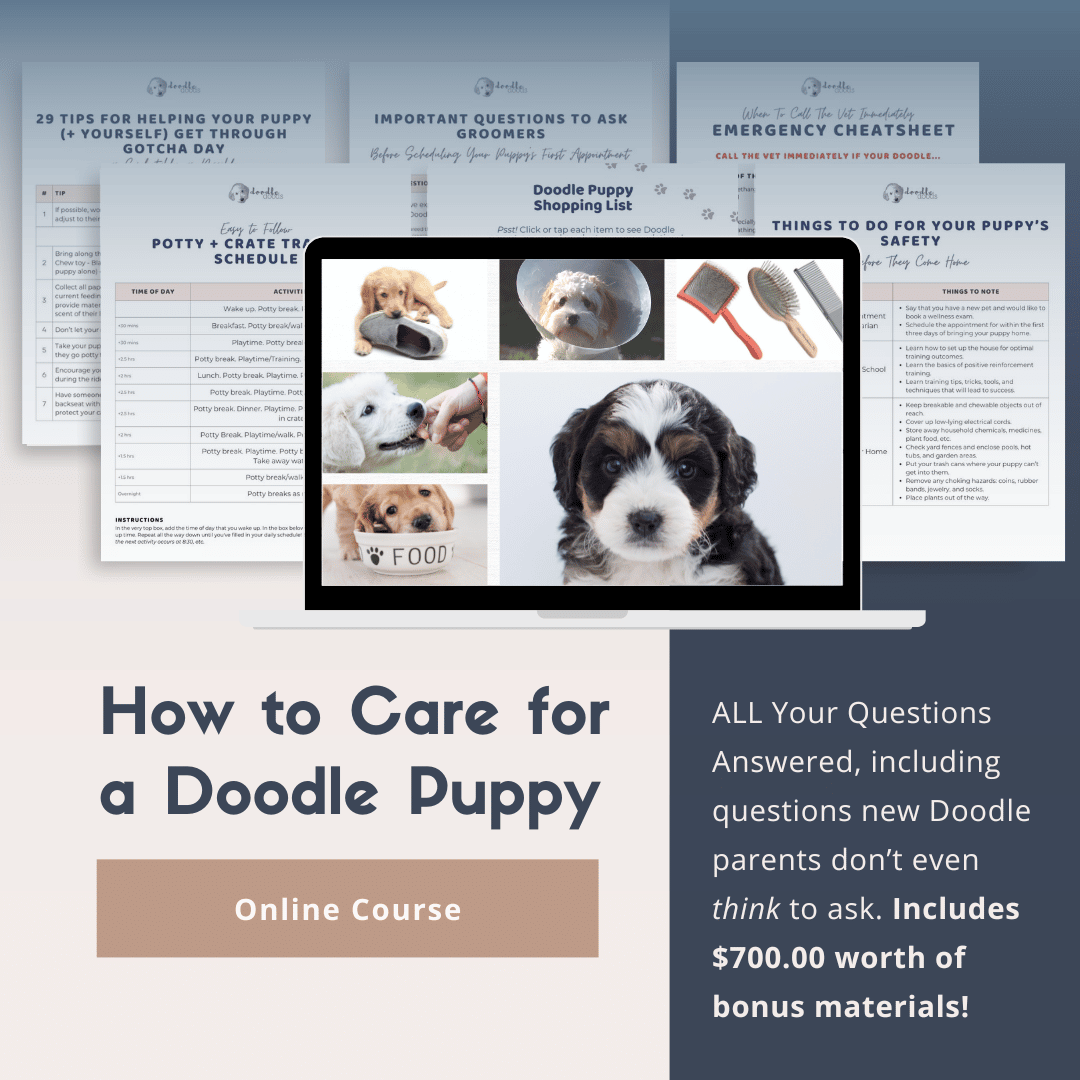
Perfect for first-time Doodle parents, get ALL your questions answered, including questions new Doodle parents don’t even think to ask.
Plus, get $700 worth of Bonus Materials for FREE, including:- Doodle Parenthood Community and Support Group ($190 value)
- Doodle Puppy Growth Tracker ($20 value)
- EMERGENCY Cheatsheet: When To Call The Vet Immediately ($50 value)
- HELP! Button ($145 value)
- And SO MUCH MORE!


